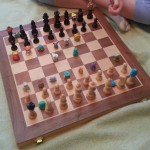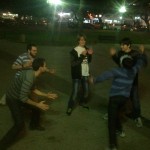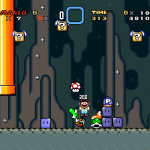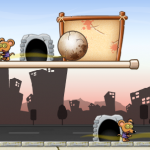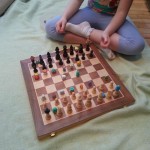Expression through play
Among some recent thoughts I’ve been having is the idea that “play” is more important than “game”. When you play with a system, or with people, you engage in a testing of boundaries, an exploration of the configuration space. A game is just one kind of system supporting such an activity.
I’m fascinated by people who can take a seemingly closed system or game, and rework or reinterpret the goals to such a point that the original game loses all relevancy. One such field is TAS — Tool-Assisted Speedrunning. Usually, no holds are barred, and speedrunners exploit every bug they can get their hands on to shave seconds off their time, which often has the players running through walls or flying directly to the end boss. But sometimes the very idea of “completing the game” takes a back seat to simply showing off. (A recent example involves corrupting Super Mario World so thoroughly that the clever speedrunner actually reprograms the game to run arbitrary code!)
How far removed are these self-set challenges from the original intention of the game designers? How much richer? The game becomes an impersonal, arbitrary infrastructure for a means of expression that carries subjective, personal value.
But you don’t need to destroy the game to find it. Minecraft has no “goal” yet allows for expressive building and interaction with its many complex systems. Skate 3 allows the player to curate video replays of one of the glitchiest physics engines I’ve ever seen. Even America’s Army allowed players to throw their weapons to the ground, and I fondly recall trying to get the opposing team to do the same so we could peacefully cavort in an awkward jumping dance at the center of the map.
It’s wonderful when a game yields to personal expression.
A coworker of mine recently spoke proudly of how his 3-year-old daughter plays a tablet game called Rat Fishing. The player is told to brutally murder helpless rats by placing bits of cheese in strategic spots, luring the hungry rats unwittingly into death traps.
But my coworker’s daughter doesn’t play that way. Her self-set goal is simply to feed the rats. She enjoys watching them eat the pieces of cheese.
Another interesting case is a modified game of chess, invented by two daughters of a friend. I saw this photo (above) posted to Facebook and immediately asked what the rules were. My friend answered,
It’s a role based game. Pieces move at the whim of the player. They also converse, argue and have relationships.
A dry, closed set of rules suddenly becomes an open world, full of expression and intrigue. And yet the chess board and pieces are no accident — this is clearly meant to expand upon the well-known idea of a formal system. To me, it is a brilliant repurposing of the ancient game.
I, too, made a short game exploring this idea. Called Dressed, the game allows the player to dress in whatever combination of clothing they wish (from a closet I populated with whatever came to mind at the time). It’s a little bit of a parody of “customizable characters” from role-playing games and open worlds like GTA. But ultimately, I wanted to distill the most basic personal expression into an interactive format. You can see more info and play Dressed online here.
In conclusion: Like many aspects of game development, I believe popular opinion is misleading us. We don’t necessarily need to “hone our game mechanics”, or playtest until smoke comes out of our ears. We don’t necessarily need to curate the ultimate experience for the player. Maybe we need to take a step back from thinking we are in control at all, and let the game breathe and exist simply as a means for the player’s desire to express themselves. Maybe we don’t have to be so afraid that people will play the game “the wrong way”.
I’ve disabled comments — if you want to discuss this post, please join me on Twitter or use the Contact page.
In: Uncategorized · Tagged with: analysis, art, experience, exploration, expression, game, play, theory

